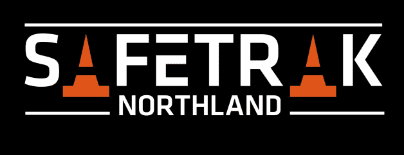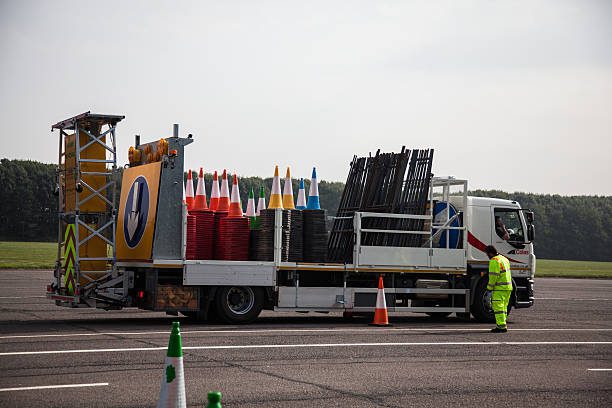Traffic congestion is a major problem in many cities around the world. It causes stress, pollution, delays, accidents and economic losses. Having efficient traffic management guidelines can help manage the flow of traffic and avoid any inconvenience when there are roadside projects and constructions going on.
With that said, here are some traffic management guidelines to help improve the efficiency and safety of the traffic system.
What Is Traffic Management?
Traffic management is the process of planning, designing, operating and maintaining the road network to optimise its performance and minimise its negative impacts. Traffic management aims to achieve the following objectives:
- Reduce travel time and delay for road users
- Increase road capacity and throughput
- Enhance road safety and security
- Reduce fuel consumption and emissions
- Improve accessibility and mobility for all modes of transport
- Promote sustainable and equitable transport solutions
Traffic management involves a combination of strategies, technologies, and regulations to achieve these objectives.
What Are the Key Elements of Traffic Management?
Traffic management involves a variety of measures and tools that can be applied at different levels and scales, depending on the context and needs of each situation. Some of the key elements of traffic management are:
Traffic Engineering
This refers to the application of engineering principles and techniques to design, construct, operate and maintain the physical infrastructure of roads, intersections, signals, signs, markings, etc. Traffic engineering aims to improve the functionality, safety and efficiency of the road network. Many traffic management plan designers create a traffic island landscape design that is effective in smoothing out traffic and lessening road congestion.
Traffic Control
This refers to the use of devices and systems to regulate the movement and behaviour of road users, such as traffic signals, signs, cameras, sensors, etc. Traffic control aims to optimise the flow and coordination of traffic, prevent conflicts and collisions, and enforce rules and regulations.
Traffic Operations
This refers to the management of the day-to-day operations of the road network, such as monitoring, analysing, adjusting and responding to traffic conditions, incidents, events, etc. Traffic operations aims to ensure the reliability, resilience and adaptability of the traffic system. Traffic management guidelines are the foundation of traffic operations.
Traffic Demand Management
This refers to the implementation of policies and strategies to influence the demand for road space and travel, such as pricing, parking, land use, public transport, etc. Traffic demand management aims to reduce or redistribute the volume or mode of traffic, especially during peak periods or in congested areas.
Traffic Information and Communication
This refers to the provision of real-time or predictive information and communication to road users and managers, such as traffic status, travel time, route guidance, alerts, etc. Traffic information and communication aims to improve the awareness, decision-making and behaviour of road users and managers.
The Importance of Having Effective Traffic Management Guidelines
Effective traffic management guidelines are essential for safety and enforcing precaution, as they provide the standards, principles and best practices for managing traffic in different contexts and scenarios. Some of the benefits of having effective traffic management guidelines are:
- They reduce congestion and delays, saving time, money and fuel and improving air quality and public health.
- They enhance safety and security by preventing or minimising crashes, injuries and fatalities and reducing the risk of crime and terrorism.
- They optimise the use of existing infrastructure and resources by maximising the capacity and performance of the transportation network, as well as promoting the integration and coordination of different modes and agencies.
- They support economic development and social equity by facilitating the access and mobility of people and goods and ensuring the fair distribution of costs and benefits among different groups and regions.
- They foster environmental sustainability and resilience by minimising the negative impacts of traffic on the natural environment and climate and adapting to changing conditions and challenges.
What Are Some of the Best Practices for Traffic Management?
Traffic management is not a one-size-fits-all solution. It requires a comprehensive, integrated, context-specific approach that considers different stakeholders’ and road users’ needs and preferences. A very detailed traffic management guidelines that all those involved should adhere to is also important. Here are some of the best practices for traffic management:
Adopt a system-wide perspective – Traffic management should consider the whole road network as a system that interacts with other systems, such as land use, environment, economy, etc. Traffic management should aim to optimise the entire system’s performance rather than individual components or segments.
Apply a data-driven approach – Traffic management should rely on accurate, timely and relevant data to monitor, analyse and evaluate traffic conditions and performance. Traffic management should use data to identify problems, opportunities and solutions and measure impacts and outcomes.
Implement a multi-modal approach – Traffic management should accommodate and facilitate all modes of transport that use or share the road space, such as cars, buses, bikes, pedestrians, etc. Traffic management should promote modal integration and balance among different modes of transport.
Engage with stakeholders – Traffic management should involve consultation and collaboration with various stakeholders who have an interest or influence on traffic issues, such as government agencies, private sector operators, civil society organisations, road user groups etc. Traffic management should seek input from stakeholders on their needs and collaborate to improve traffic situations.
A Step-by-Step Guide to Implementing Traffic Management Guidelines
Efficient traffic management is key to improving road safety and reducing congestion. Here’s a concise guide to implementing traffic management guidelines:
-
- Assess Current Traffic Conditions: Analyze traffic patterns, identify problem areas, and gather user feedback.
- Develop a Traffic Management Plan (TMP): Define objectives, map affected areas, and outline control measures like signage and lane closures.
- Ensure Compliance with Regulations: Align your TMP with local traffic laws, safety standards, and obtain necessary permits.
- Install Traffic Control Measures: Set up signage, barriers, and use technology like traffic cameras for monitoring.
- Train Personnel and Educate the Public: Equip traffic controllers with necessary skills and inform road users through campaigns.
- Monitor and Adjust the Plan: Evaluate performance, address inefficiencies, and update the TMP as needed.
- Review and Document Outcomes: Measure improvements, document lessons learned, and refine future initiatives.
Implementing traffic guidelines requires a strategic approach and continuous improvement to ensure a safer and smoother traffic environment.
Get to Know Traffic Management Guidelines with Safetrak Northland!
Traffic management in NZ has never been better with Safetrak Northland.
Safetrak Northland is a traffic management team that can assist with all aspects of traffic management and control. For the past five years, Safetrak Northland has been involved in traffic management and control. We’ve served a diverse range of customers and clients throughout New Zealand, from Cape Reinga to Whangarei.
Our customers have faith in the service we provide, which attests to the calibre of our work. Get in touch with us today with all your traffic needs! Contact us +64 080072338725 or admin@safetraknorthland.co.nz!

